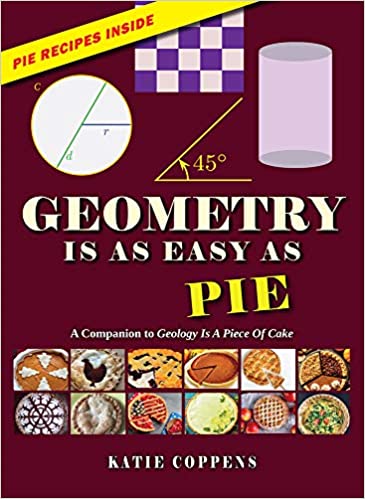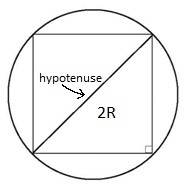
Here are answers from the book, Geometry is as Easy as Pie
by Katie Coppens
Pg. 48
- A rectangle has rotational symmetry at 180º . Yes, it can have reflectional symmetry.
- Answers will vary.
- The rhombus and square.
- 360º. It will tessellate if the angles add up to 360º.
- Answers will vary, some include squares and rectangles or 2 . It will tessellate if the angles add up to 360º.
- Answers will vary, such as a rectangle, so you could cut a 5 by 2 array or a regular decagon shaped pan.
- Rectangles, squares, and rhombuses are examples of parallelograms. All have opposite sides that are parallel and the same length.
Pg. 50
- A circle, a sphere is a 3-D circle.
- Answers will vary. One is wider and flatter, which would give it a shorter baking time.
- Volume of a cylinder is:
V=πr2h
Pie one would be π X 4 X 1, which equals 50.27 inches 3
Pie two would be π X 4 X 2, which equals 100.53 inches 3
The difference in volume is50. 26 inches 3
- π X 4 X 2, which equals 53 inches 3
π X 4.5 X 2, which equals 127.23 inches 3
The difference in volume is 27. 3 inches 3
- Circumference of a circle is:
C=2πr
6” diameter pie one would be 2 X π X 3, which equals 18.85 inches
9” diameter pie one would be 2 X π X 4.5, which equals 26.27 inches
12” diameter pie one would be 2 X π X 6, which equals 37.7 inchs
Pg. 51
-
- They all have the same volume because they all take up the same amount of space. All are actually the same ball of dough rolled out three different ways.
- Volume of a rectangular prism is length X width X height:
The first pie is 9 X 5 X 2= 90 inches 3
The second pie is 18 X 10 X 4= 720 inches 3
The second pie would hold far more than 800 blueberries.
- Answers will vary. You could find the volume for it as a triangular prism or find the volume of the pumpkin pie, then the chocolate pie and add them together.
Pg. 52
-
- Diameter is circumference divided by π. 18 divided by 3.14…, which is about 5.73 inches.
- You use the Pythagorean Theorem to figure it out. The hypotenuse is 12 inches, so each side of the square would be 4852 inches.

- For pie one, look at the top layer, they are all parallel, then look at the bottom layer, they are all parallel. For pie two, they are different sizes, but still show parallel lines. For pie 3, the weave, but still show parallel lines.
- Pie 2 and 3 show perpendicular lines.
- 360º because all the pieces come together to make a circle.
Pg. 53
-
- Answers will vary and could include acute, congruent, supplementary, and complimentary.
- Answers will vary, but could include, volume, surface area, the shape of the pie, the degrees of the angle, the type of angle, parallel, perpendicular.
- $15 X 4 = $60. $60-$50= you would save $10.
- 1 ¼ tripled is 3 ¾ sticks. 3 ¾ divided in half equals 1 7/8 cups of butter.
- ¼ + ⅓ + ⅛ = 17/24. There would be 7/24 of the pie left over.
If you don’t yet have your own copy of Geometry is as Easy as Pie, you can order one below:








